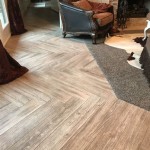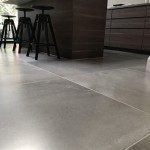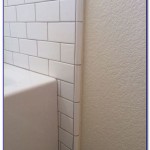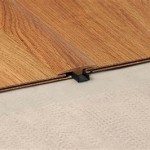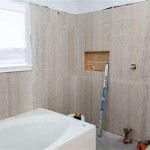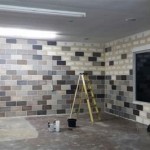The Benefits of Choosing Tile Vinyl Flooring Overlay Tiles
Tile vinyl flooring overlay tiles, also often referred to as luxury vinyl tile (LVT) or click-lock vinyl flooring, offer a compelling alternative to traditional flooring options like ceramic tile, hardwood, or laminate. This product category has gained significant popularity in recent years due to its versatility, durability, aesthetic appeal, and ease of installation. Understanding the advantages of tile vinyl flooring overlay tiles allows informed decisions for residential and commercial flooring projects.
Overlay tiles are designed to be installed directly over existing subfloors, minimizing the need for extensive and costly preparation. This feature makes them particularly attractive for renovation projects where removing existing flooring is undesirable or impractical. The composition of these tiles typically involves multiple layers, including a wear layer, a print layer, and a core layer, contributing to their overall performance and longevity. The wear layer provides resistance to scratches, scuffs, and stains, making it suitable for high-traffic areas. The print layer allows for a wide range of realistic designs, mimicking the appearance of natural materials like wood, stone, and ceramic tiles. The core layer provides stability and structural integrity to the tile. Understanding these components is crucial for evaluating the suitability of tile vinyl flooring overlay tiles for specific applications.
Durability and Resistance
One of the primary benefits of tile vinyl flooring overlay tiles is their inherent durability. The multi-layered construction, particularly the wear layer composed of PVC or urethane, offers exceptional resistance to daily wear and tear. This wear layer protects the underlying print layer from damage caused by foot traffic, pet claws, spills, and impacts. The thickness of the wear layer directly correlates with the tile's ability to withstand abrasion and maintain its appearance over time. A thicker wear layer is generally recommended for commercial applications or areas with high traffic volume. The resistance to scratching and scuffing reduces the need for frequent maintenance and replacement, contributing to the long-term cost-effectiveness of this flooring option.
Beyond wear resistance, tile vinyl flooring overlay tiles are also highly resistant to moisture. Unlike hardwood or laminate flooring, vinyl is inherently waterproof, making it suitable for installation in areas prone to moisture exposure, such as bathrooms, kitchens, and basements. The waterproof nature of vinyl prevents water absorption, which can lead to warping, swelling, and mold growth in other types of flooring. This makes tile vinyl overlay a hygienic and low-maintenance option for environments where moisture is a concern. Spills can be easily wiped clean without causing permanent damage or staining. The resistance to moisture also makes it a suitable choice for homes with pets or young children.
Furthermore, overlay tiles exhibit excellent resistance to staining. The non-porous surface of vinyl prevents liquids and stains from penetrating the material, making it easy to clean and maintain. Common household spills, such as coffee, juice, and wine, can be easily removed with a damp cloth or mild detergent. The stain resistance reduces the need for harsh cleaning chemicals, which can damage other types of flooring. This feature is particularly beneficial in high-traffic areas where spills are more likely to occur. The combination of wear resistance, moisture resistance, and stain resistance makes tile vinyl flooring overlay tiles a durable and long-lasting flooring solution for a variety of applications.
Ease of Installation and Maintenance
The installation process is a significant advantage of choosing tile vinyl flooring overlay tiles. Many products are designed with a click-lock system, allowing for a floating installation without the need for adhesives or specialized tools. This installation method simplifies the process and reduces the time and cost associated with professional installation. The tiles simply click together, creating a seamless and stable floor surface. This do-it-yourself (DIY) friendly installation allows homeowners to save on labor costs and complete the flooring project independently. However, proper subfloor preparation is still essential to ensure a level and stable base for the tiles.
Subfloor preparation typically involves cleaning the existing floor surface and addressing any imperfections, such as cracks or unevenness. A level subfloor is crucial for preventing movement and ensuring the longevity of the tile vinyl flooring. In some cases, a self-leveling compound may be required to create a perfectly smooth surface. While the click-lock system simplifies the installation process, attention to detail during subfloor preparation is critical for achieving a professional and durable result. The ability to install overlay tiles over existing flooring minimizes the disruption and mess associated with traditional flooring replacement, making it a convenient option for renovation projects.
The maintenance requirements for tile vinyl flooring overlay tiles are minimal. Regular sweeping or vacuuming is sufficient to remove dirt and debris. For more thorough cleaning, a damp mop and mild detergent can be used to wipe the floor surface. The stain-resistant properties of vinyl allow for easy removal of spills and stains without the need for harsh chemicals or specialized cleaning products. Unlike hardwood flooring, vinyl does not require waxing or polishing. The low-maintenance nature of tile vinyl flooring overlay tiles makes it a practical choice for busy households and commercial environments. The combination of easy installation and minimal maintenance contributes to the overall cost-effectiveness and convenience of this flooring option.
Aesthetic Versatility and Design Options
Tile vinyl flooring overlay tiles offer a wide range of aesthetic options to suit various design preferences. Advances in printing technology have enabled manufacturers to create realistic reproductions of natural materials, such as wood, stone, and ceramic tile. The print layer of the tile can replicate the grain patterns, textures, and colors of these materials with remarkable accuracy. This allows for achieving the desired aesthetic without the cost, maintenance, or environmental concerns associated with natural materials. For example, vinyl tiles can mimic the look of hardwood flooring while offering superior water resistance and durability.
The availability of various sizes, shapes, and patterns further enhances the design versatility of tile vinyl flooring overlay tiles. Tiles can be installed in a variety of configurations, such as a traditional grid pattern, a staggered pattern, or a herringbone pattern. Different tile sizes and shapes can be combined to create unique and visually appealing designs. The ability to customize the floor design allows for creating a personalized space that reflects individual style and preferences. The wide range of design options makes tile vinyl flooring overlay tiles suitable for various interior design styles, from traditional to contemporary.
Furthermore, the color palette available for tile vinyl flooring overlay tiles is extensive. From neutral tones to vibrant hues, there are options to complement any décor. The color of the flooring can significantly impact the overall ambiance of a room. Light-colored floors can create a sense of spaciousness and brightness, while dark-colored floors can add warmth and sophistication. The ability to choose from a wide range of colors allows for creating a cohesive and harmonious interior design scheme. The aesthetic versatility of tile vinyl flooring overlay tiles makes it a popular choice for both residential and commercial applications. The ability to replicate the look of natural materials, combined with the wide range of sizes, shapes, patterns, and colors, provides endless design possibilities.
In conclusion, tile vinyl flooring overlay tiles represent a compelling flooring solution that provides a balance of durability, ease of installation, minimal maintenance, and aesthetic versatility. Its multilayered structure contributes to its resistant properties. Homeowners and businesses can benefit from a flooring option that delivers long lasting performance and visual appeal.

Can You Lay Vinyl Flooring Over Tile Mersey

Vinyl Floor Tiles Complete Guide To Pvc And Installation

Why Tile Warehouse

How To Choose The Best Flooring For Your Home Model Remodel

Geneous Tiles Vs Vinyl Flooring 7 Differences To Note

Vinyl Floor Tiles Complete Guide To Pvc And Installation

Can I Install Vinyl Tiles Over Laminate Flooring Comprehensive Guide

Vinyl Flooring Pros And Cons Forbes Home

Vinyl Flooring And Floor Tiles The 8 Pros Cons

What Is Spc Vinyl Flooring And Are Its Advantages
Related Posts

